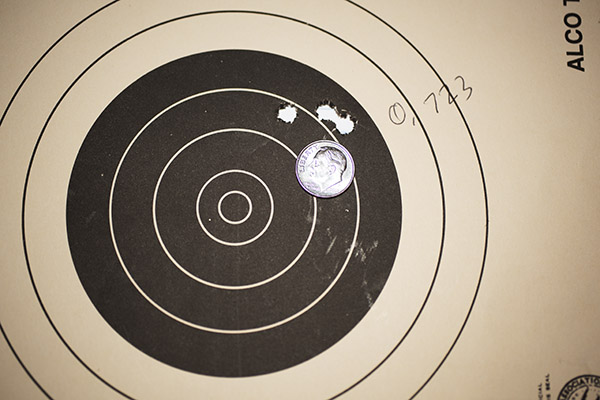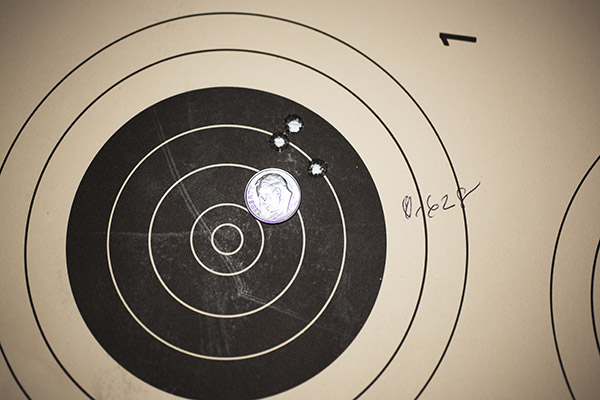The 6.5 Creedmoor cartridge draws a lot of flak on the Internet. I suspect most of the folks who go negative do so with no real experience. I have two 6.5 Creedmoor rifles, and both do very well for me. Will they magically overcome a shooting skills deficit? No. Are there other cartridges out there that can do as well? Sure. But the 6.5 Creedmoor, in my opinion, does what it is supposed to, and that’s provide accuracy with modest recoil. I’m a believer.
I had my two Creedmoors on the range a few days ago, a Browning X-Bolt and a Ruger No. 1 (you’ve seen them on these pages recently). Both are elegant rifles and each has what I would call exhibition grade wood. The Browning has a curly maple stock and the Ruger has fancy walnut. Both are factory rifles, and other than mounting scopes on each, both are unmodified guns.
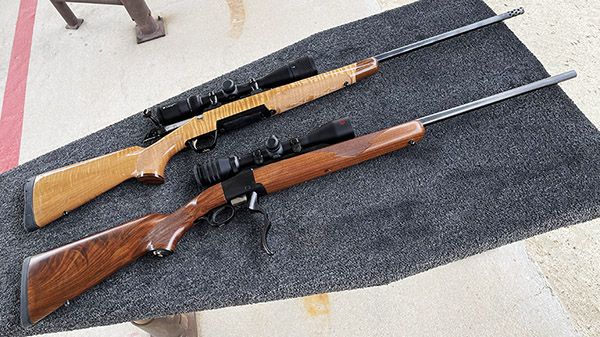
Which one is prettier? It’s a tie in my opinion. Good wood, to me, is one of the best parts of having a fine rifle, and both these 6.5 Creedmoors answer the mail in that regard. The wood seems to be alive on each, changing depending on the viewing angle and how the light hits it. This sensitivity to light orientation is probably more pronounced with the maple-stocked Browning. The curl runs from front to rear and top to bottom on both sides (this rifle has an unusually highly-figured stock). When photographed from the front (as I did in the photo below), the figure on the Browning is more subdued.
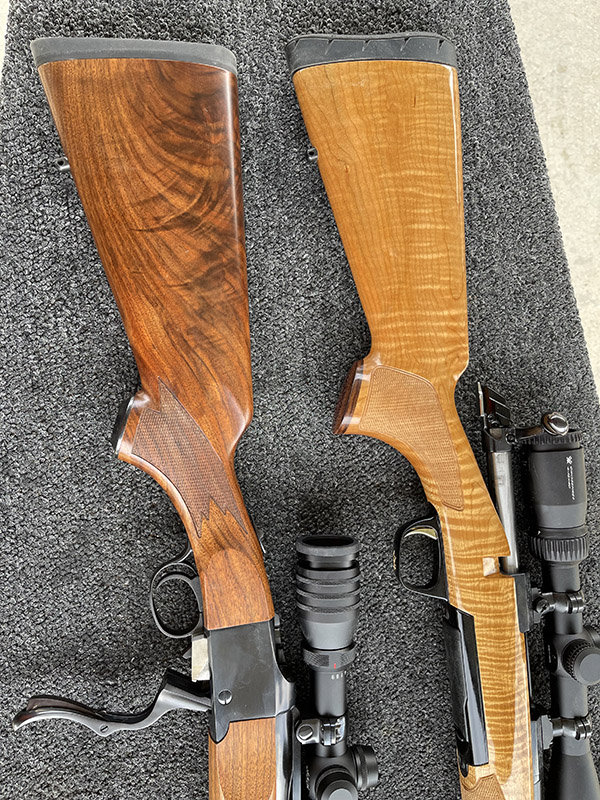
When photographed from the rear, though (as you can see below), the Browning’s curl really pops. The Ruger’s fancy walnut looks good from any angle.
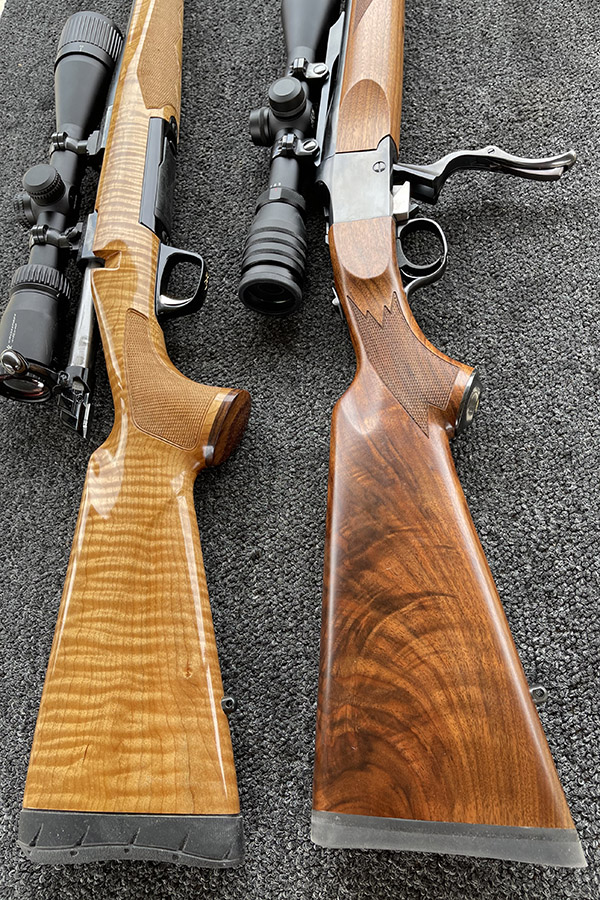
The Browning is a bolt action rifle based on the Paul Mauser design (as are nearly all bolt action rifles) and it holds five rounds (four in the magazine and one in the chamber). You can buy extra magazines and carry them with four more rounds ready to go in each (you know, in case your deer starts returning fire). The Ruger is a falling block action and it is a single shot. I prefer that and I admit it is a bit of snobbery on my part; I like to think I only need one shot. On the rifle range, I only load one round at a time. Come to think of it, on a hunt I also only load one round at a time. California’s magazine restrictions are irrelevant to me; to my way of thinking if you need a 30-round magazine you aren’t much of a shot.
As much as I love Ruger No. 1 rifles, I prefer the scope location on a bolt action rifle better. A telescopic sight on a bolt action is in a more natural position. The Ruger No. 1 positions the scope further forward, and even when I mount the scope as far to the rear as it will go, it requires an unnatural amount of forward stretch to get the correct eye relief. You can get Ruger scope rings with a rearward setback to overcome this problem, but they look goofy and they add more weight to the rifle.
The Ruger is a heavier rifle. Part of that is the slender and shorter barrel on the Browning. Walnut is lighter than maple, but the Ruger barreled action is heavier that the Browning X-Bolt barreled action. Browning’s specs put the maple X-Bolt at 6 1/2 pounds; a Ruger No. 1B (this rifle’s configuration) is listed as 8 1/4 lbs. On the rifle range the Ruger’s heft doesn’t bother me. If I was carrying a rifle all day on pig hunt, I’d prefer the lighter Browning. The Browning feels almost dainty compared to the No. 1.
I mounted inexpensive scopes on both rifles. The Browning has a Vortex 4×12 scope and the Ruger has a 3×9 Redfield. The optics are equally bright on both. The Vortex has indistinct indexing on its windage and elevation click adjustments; the Redfield turret is snappy and allows counting clicks by feel alone as you make them. The Redfield Revenge is discontinued (the Redfield company is no more), but it is a good scope. I prefer the Redfield to the Vortex.
Both rifles are accurate at right around minute of angle, and both will occasionally get down in the 0.6-inch group neighborhood. The Ruger didn’t like the Speer 140 grain jacketed soft point bullet with 41.0 grains of IMR 4350, although I’ve used it before with a lighter charge of that same powder and achieved sub-minute-of-angle groups. Rifles have their preferences. With a load dialed for each rifle, the accuracy of both rifles is comparable.
I tried a few loads in both rifles recently with IMR 4350 and Varget powder, and I also tried neck-sized-only ammo in the Browning. Here are the results:

If there’s an advantage to neck sizing fired cases in the Browning, it’s not obvious to me. I’m going to full length resize the brass from this point forward, which will allow me to use my reloaded ammo in either rifle.
When I bumped the IMR 4350 charge up to 41.0 grains, accuracy deteriorated from previous sessions. The Browning likes 40.7 grains (or maybe a little less); the Ruger did better with the Speer 140 grain jacketed softpoints at 39.5 grains of IMR 4350.
What’s next? I found Berger Bullets load data for IMR 7828 SSC propellant. That’s a slower burning propellant ordinarily used in magnum cartridges, but I like the fact that it fills the case (which should make for a more accurate load) and I thought I would give it a try. I have 20 rounds loaded and I’ll test this combo later this week. Stay tuned, and you’ll read about it here on the ExNotes blog.
More Tales of the Gun!
Our recent Browning 6.5 Creedmoor story!
Our recent Ruger No. 1 Creedmoor story!
Never miss an ExNotes blog!

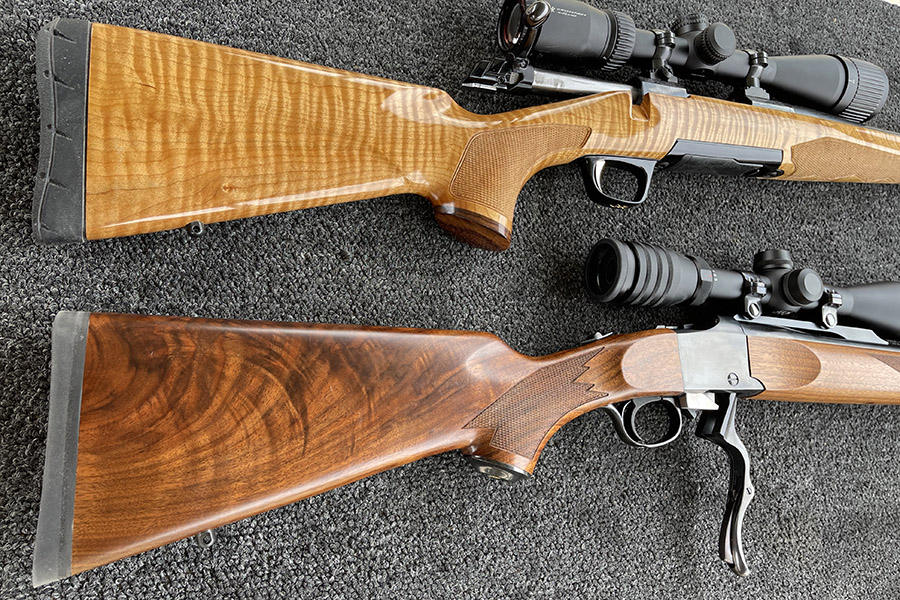
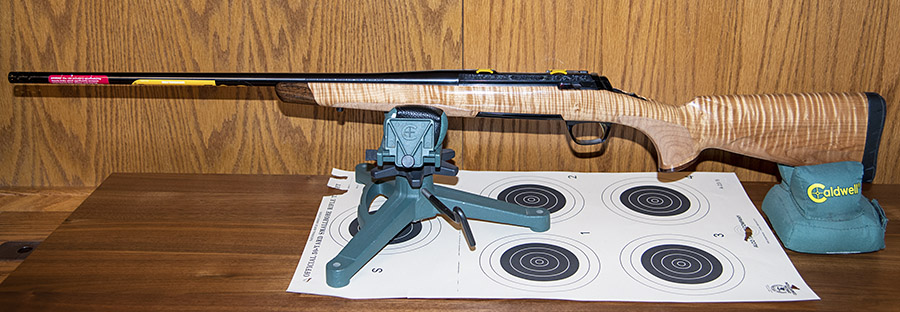

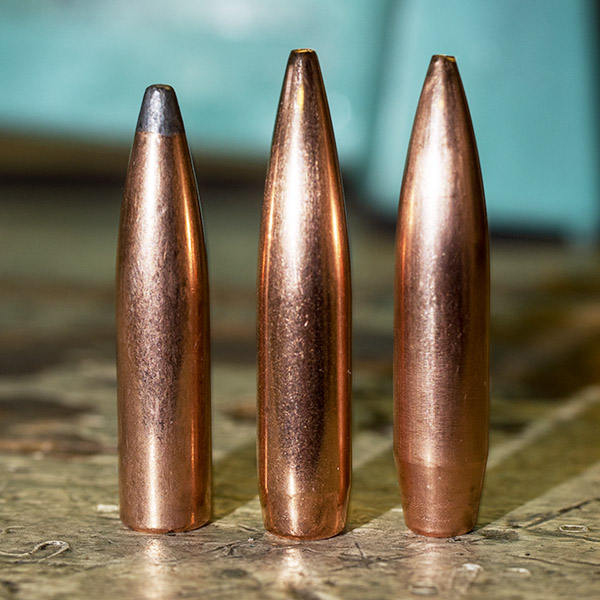

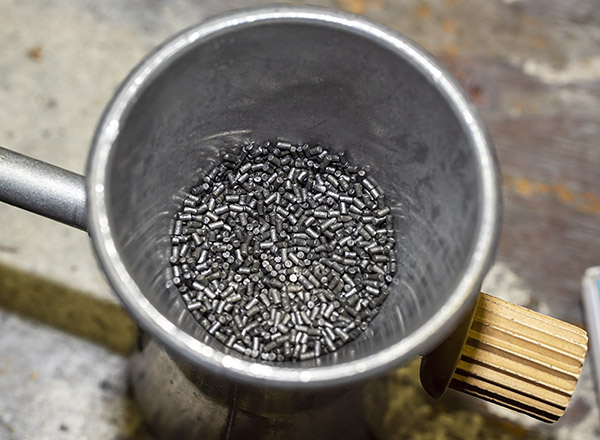
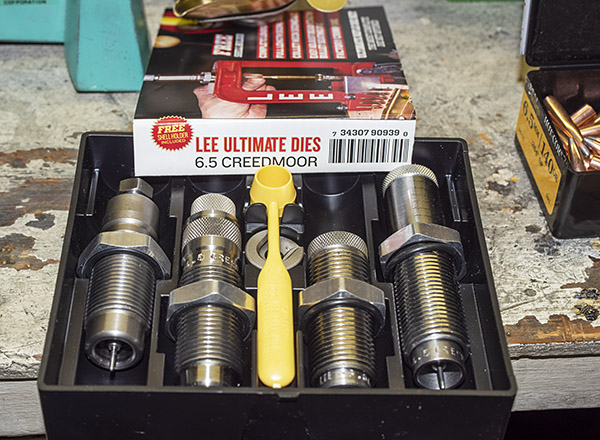

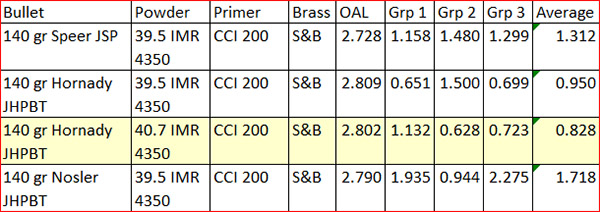 Here’s what the best groups looked like:
Here’s what the best groups looked like: